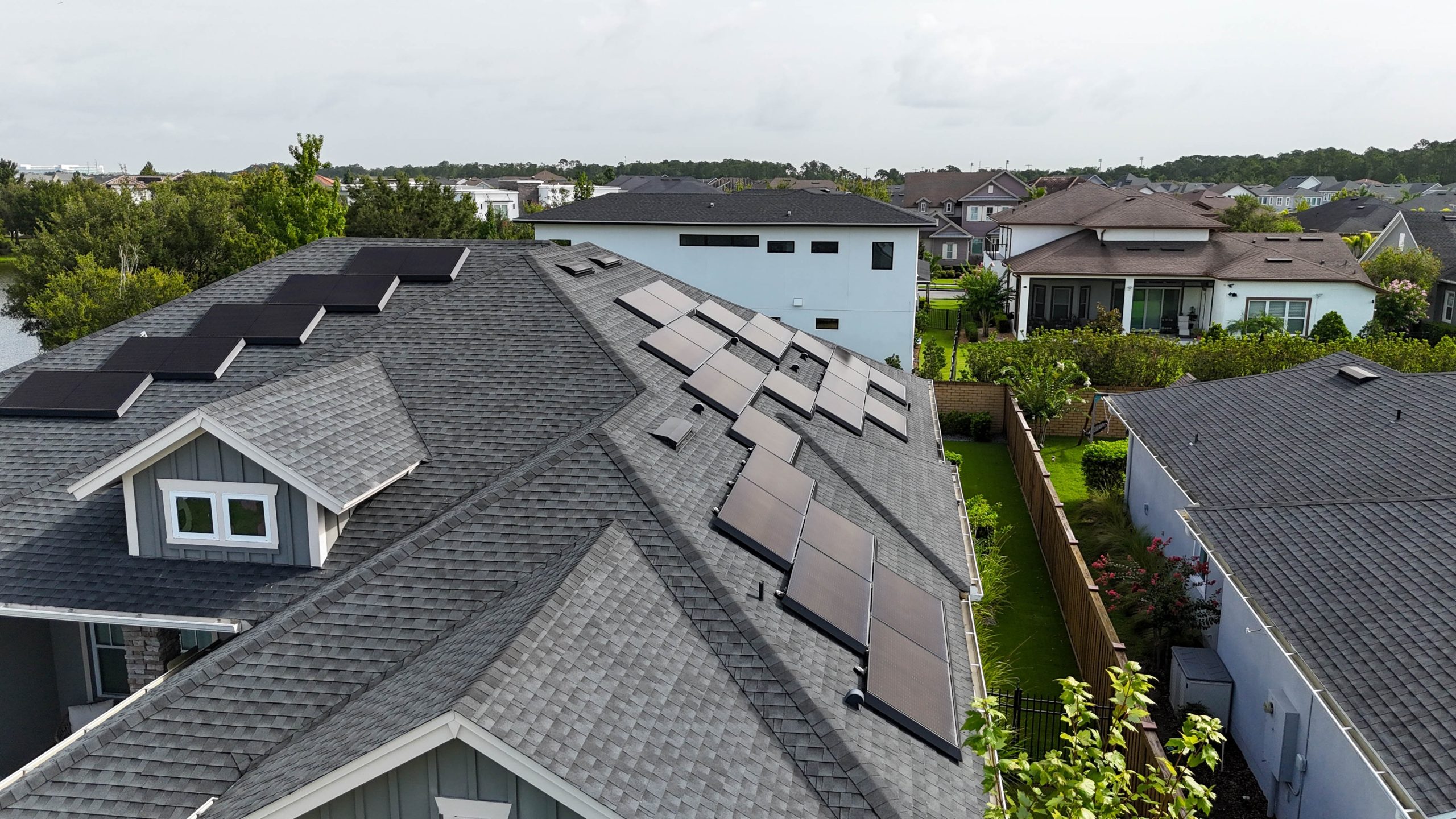The Impact of Government Policies on Solar Adoption

In recent years, solar energy has evolved from an alternative energy source to the mainstream. This was facilitated by government programs for solar panels and government policies. In this article, we will consider their important role in the development of solar energy.
- Do I qualify for government assistance for solar panels?
- Does the government pay for solar panels?
- How do I get a government grant for solar panels?
You’ll get answers to these and other relevant questions.
Government Incentives for Solar Adoption
As part of the transition to clean energy sources, governments of different countries are taking steps to increase the usage of solar energy.
Here are some of the main solar energy government initiatives:
- Government-funded solar programs. Governments offer financial incentives to promote environmentally friendly solutions among households and businesses and to implement solar energy: tax credits and subsidies.
- Government funding for solar panels. Investments include solar panels on public buildings, infrastructure, and land, as well as in solar energy research.
- Education and awareness raising. Governments inform about the positive aspects of solar energy and how to implement it, for example, a government certificate course in solar energy.
- Regulatory changes. These are laws to simplify the process of installing solar panels.
- Renewable energy standards. Governments set requirements for energy standards to cover a portion of energy consumption with solar energy.
Federal Tax Credits and Rebates
In the early 2000s, solar energy was almost at the initial stage of development: the total capacity of solar photovoltaic systems globally was about 1.3 GW. The situation is changing as governments have begun to realize the potential of solar energy.
In 2005, the United States passed the Energy Policy Act, which included the Solar Investment Tax Credit (ITC), offering a 30% tax credit for solar energy systems on residential and commercial properties.
This government grant for solar panels contributed to the annual growth of the solar industry in the US by 52% over the next ten years. The government solar panel program was then extended until 2023, at which time net solar production in the US reached a record high of 164.5 terawatt hours.
Over the past twenty years, solar energy production has grown significantly. This is a testament to the effectiveness of government grants for solar panels, including the ITC program.

As part of the transition to clean and renewable energy sources, the US federal government has introduced various government programs for solar panels to encourage the use of solar energy.
Here are some of the government programs for solar panels:
- Net energy metering (NEM). This technology permits solar panel owners to sell excess electricity back to the grid.
- Renewable portfolio standards (RPS). RPS requires energy companies to provide a certain percentage of electricity from renewable sources set by the regulatory authority.
- Feed-in tariff (FiT). The FiT policy provides that power companies purchase electricity from renewable energy producers at a fixed price, usually under long-term contracts of 15 – 25 years.
Government Programs For Solar Panels and Local Solar Programs
As for state government rebates, they typically do not reduce federal tax credits. State-level tax credits for solar panel installation do not directly affect federal expenditures.
However, receiving a state tax credit can increase taxable income for federal taxes because it reduces state tax deductions. This has direct implications for federal tax liabilities.
Among the government programs for solar panels are:
State Tax Credits
In addition to government solar programs, such as the ITC, some states also provide special incentives for the purchase of solar installations – government loans for solar panels. Information on specific incentives for each state can be found in the Database of State Incentives for Renewables & Efficiency (DSIRE).
State Tax Incentives
Some states provide additional tax credits for the installation of solar systems. These programs operate similarly to federal programs but are taken into account when calculating state taxes. The amount of these tax credits varies from state to state. Information about government solar programs is available from local solar suppliers.
Government Subsidies
Solar subsidies from state governments usually come in the form of a fixed amount that is paid to those who install solar systems, water heaters, or batteries. These government solar panel schemes are available regardless of the affordability of other federal tax credits.
Solar Renewable Energy Certificates (SRECs)
SRECs are a state-level incentive for solar energy. These certificates represent each megawatt-hour of electricity generated by solar installations and can be sold on the market. The value of SRECs directly depends on the balance of capacity and demand in the market, where utilities are required to meet renewable portfolio standards.
Local Utility Subsidies
Apply to the installation of solar PV systems. These solar panel government grants are not taxable.
Property Tax Exemption
For those who install solar systems, some states have canceled property tax.
Thus, government grants for solar panels contribute to the development of solar energy.
Net Metering Policies

This is a system of payments that allows consumers to make income from the sale of excess electricity.
Net metering involves government assistance to solar panels, enabling consumers to profit from selling excess electricity back to the grid, which lowers their monthly electricity bill.
This serves as an incentive for solar energy users, as it allows you to deduct excess electricity from your utility bills. The terms and conditions of these solar panels for home government schemes vary from state and local utility companies, but they are currently available in 38 states and Washington, DC.
DSIRE provides a map that provides general information about net metering policies in any state. However, as of 2023, Alabama, South Dakota, and Tennessee do not have government solar panels or local net metering programs.
If there are no conditions for installing panels on your own, sign up for a government-paid solar panels project. It provides you with a share of the electricity generated by a public solar installation that can be deducted from your monthly electricity bill.
Regulations and Permitting Processes
Typically, local authorities require that homeowners or contractors obtain a rooftop solar permit before installing solar panels.
Once the PV system is completed, a local government official inspects the panels to ensure they meet current safety standards. The utility company then gives permission to connect the system to the grid.
Local government rules and requirements for permits and inspections vary from jurisdiction to jurisdiction. The cost of installing a solar system consists not only of the price of the equipment but also of other additional costs, which are called “soft costs”.
Future Policy Trends in Solar Energy
Given that the cost of solar energy has fallen by 90% in ten years, the outlook looks very promising. Advances in technology, government grants for solar panels, economies of scale, and fierce market competition have made solar energy cheaper than many traditional energy sources.
The potential for solar energy has never been greater, and with continued government support and innovation, the outlook is optimistic.
Current approaches to government assistance for solar panels can be classified into several areas:
- Formation of independent markets. While subsidies and financial incentives were effective in the initial stages of solar development, governments are increasingly moving towards creating conditions for independent market operation. This includes government solar panel policies that promote competition, encourage innovation, and create the right conditions for investment.
- Integration into the grid. As solar energy production grows, governments are focusing on policies that facilitate the integration of solar capacity: investing in smart grids, developing energy storage solutions, and introducing grid management techniques to account for the variable nature of solar energy.
- Utilization and recycling of solar panels. Extended producer responsibility (EPR) rules are being developed to encourage manufacturers to dispose of and recycle their products.
- Research and development (R&D). Governments support R&D in solar technology with incentives to develop new technologies that can reduce the cost of solar energy, improve panel efficiency, and find new applications for solar technology.
- Education and training. Governments are directing policies to support education and skills development programs for new employees in the sector.
These initiatives are aimed at ensuring the sustainable development of solar energy and supporting innovation in the sector, as well as providing government grants for solar panels for businesses.
In summary, government programs for solar panels have played a critical role in the progress of the solar industry. Thanks to government support and favorable conditions for the development of renewable energy, solar technologies have become more affordable and attractive to households and businesses. Therefore, we can expect further growth in the solar sector shortly.
Get your free solar quote to connect to the best solar providers in your location.
FAQ
What federal tax credits are available for solar panel installations?
The Inflation Reduction Act passed by Congress in 2022 significantly changed the solar tax credit. In particular, it extended the credit until 2035 and increased its amount from 22% to 30% of the required amount by 2032.
What is the impact of state and local incentives on the affordability of solar panel installation?
Numerous tax breaks and other incentives at the federal, state, and local levels make the transition to solar energy a profitable investment. Despite the high upfront costs, these incentives and the long-term return on investment can make installing panels a financially viable solution.
How does net metering work, and what benefits does it offer to those who install solar panels?
Net metering is a system that allows you to account for the excess electricity produced by your solar panels that are sent to the grid. This approach reduces the load on your solar panels and avoids the need for additional panels to cover increased electricity demand.



